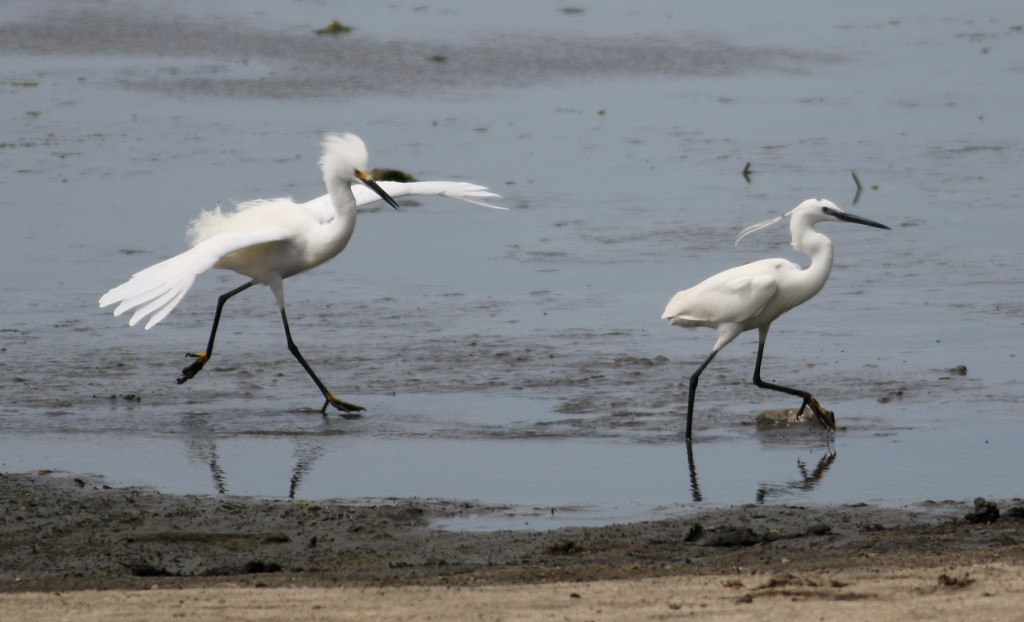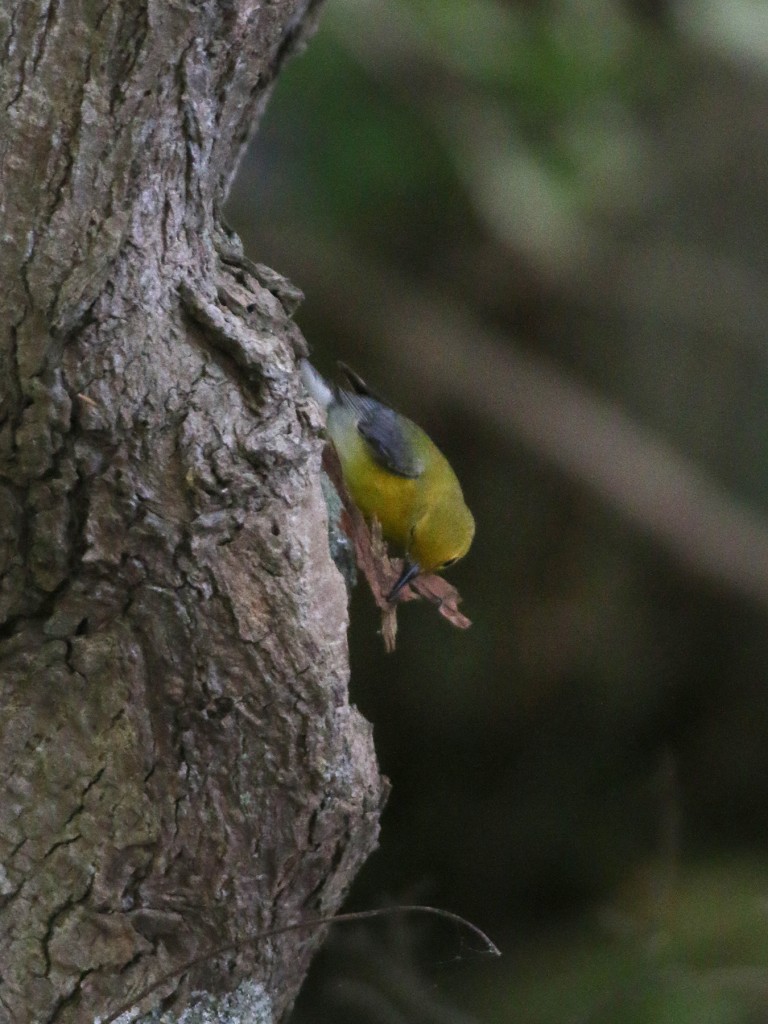Today Jeanine and I decided to visit the Heislerville WMA, hoping to find some high quality shorebirds (with Curlew Sandpiper or Ruff topping our wish list). We came up empty on those shorebirds, but did even better, finding a Little Egret instead. Perhaps a little background is in order. Little Egret is a bird normally seen in Eurasia, Africa, and Australia, but is a rarity in North and South America. In the US, sightings are restricted to the northeast. It had not ever been seen in New Jersey until April 27 of this year, when Cameron Cox spotted one in the main impoundment in Heislerville. To give an idea of its rarity status, this is the only Little Egret reported in eBird in the mainland of North or South America this year (they recently began breeding on a few islands in the Caribbean). Although multiple people were able to view and photograph that bird on April 27, it was a classic one-day-wonder, with no other sightings over the past seven days. Had it moved on?
Well, today, after morning stops at Belleplain State Forest searching for passerine migrants (I’ll get back to them later), we arrived at Heislerville with shorebirds on our mind. With no sightings of Little Egret for the past seven days, it would be foolish to imagine that we would spot it today, so we were going to focus strictly on the shorebirds. At least that was the plan. As we pulled the car onto the gravel dike, a group of Snowy Egrets was in the nearby channel, and as we glanced over with our binoculars before even exiting the car, it became apparent that one of them was different. Two long plumes were being blown behind its head, its lores were bluish-gray (in contrast to the yellowish lores of the nearby Snowy Egrets), it appeared ~10-20% larger than the nearby Snowys, and it had yellow feet. All classic textbook Little Egret characteristics.

Little Egret. The long plumes on back of the head, the bluish lores, large black bill, and yellow feet are all Little Egret characteristics. Note however, the bluish-gray patches on the crown, ‘shoulder’, and the upper part of the long plumes that are not depicted in the field guides.
Could it be? No way. Finding a mega-rarity is not supposed to be that easy. Could it be something else? One thing that kept us from celebrating immediately was seeing patches of bluish-gray plumage on the head, ‘shoulders’, and on the trailing long plumes of this bird. That was a problem, because our field guides depict Little Egrets as pure white year-round. After snapping a few documentary photos, I texted Tom Johnson to see if he could confirm our identification, and he immediately replied that it was indeed a Little Egret, and moreover, that it was the same bird as was seen by Cameron Cox based on the pattern of those blue patches.
Fortunately, we were able to share this sighting with a few other birders who were there on the dike, but the bird was moving occasionally to different locations within the impoundment, and after ~30 minutes, we lost sight of it. Feeling the obligation of ‘handing it off’ to others, we continued to search for it as others arrived, but came up empty. Since I’m a blatant optimist, I’ll look on the bright side and say that our good fortune raises that possibility that others will continue to look for this bird and that it will be found yet again. (Follow-up note: the Little Egret continued to be viewed for at least three more days. This bird was accepted by the NJ Birds Records Committee in November 2017, making it the 479th bird species on the New Jersey list.)

Snowy Egret (on the left) and Little Egret. Most of the time the Little Egret appeared to be larger than the nearby Snowy Egrets. Here the difference is not so noticeable, but compare the apparent sizes here with the following photo.

The size difference between Snowy Egret (on the left) and Little Egret is perhaps exaggerated here due to their posture, but most of the time the Little Egret appeared to be larger than the Snowys. (Doesn’t that make the name ‘Little Egret’ somewhat ironic?)
By the way, in case you are wondering why people go to Heislerville to look for shorebirds, here is a photo of what just part of the main impoundment looks like when shorebirds are migrating through. Perhaps you can imagine what it looked like when the birds all flushed due to the presence of a Bald Eagle or Peregrine Falcon.

Just a part of the main pool at Heislerville WMA. You might be justified calling this needle-in-a-haystack birding. It is tough trying to find a rarity in that mass of birds through a scope, but the sheer numbers are impressive for New Jersey. The majority of the birds in this photo are Dunlin.
Overall, it was an amazing day with three sightings that I had never seen before. In the morning we saw a Prothonotary Warbler flying in and out of a natural nest cavity (previously I have only seen them using man-made boxes to nest in), and later we found three Summer Tanagers in a single tree, so it speaks to the high quality of the day that neither of those were even our top highlight. What a day!

